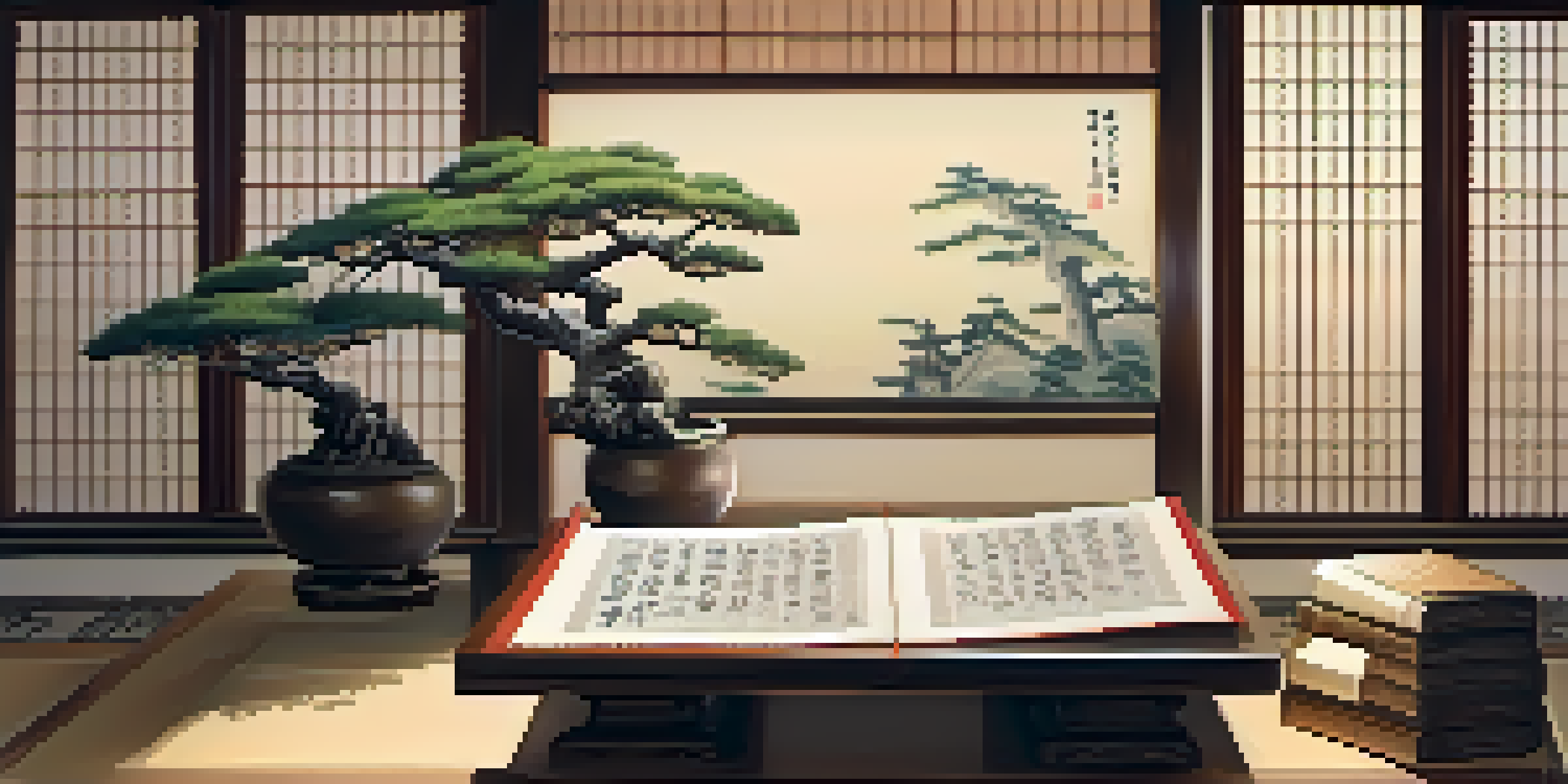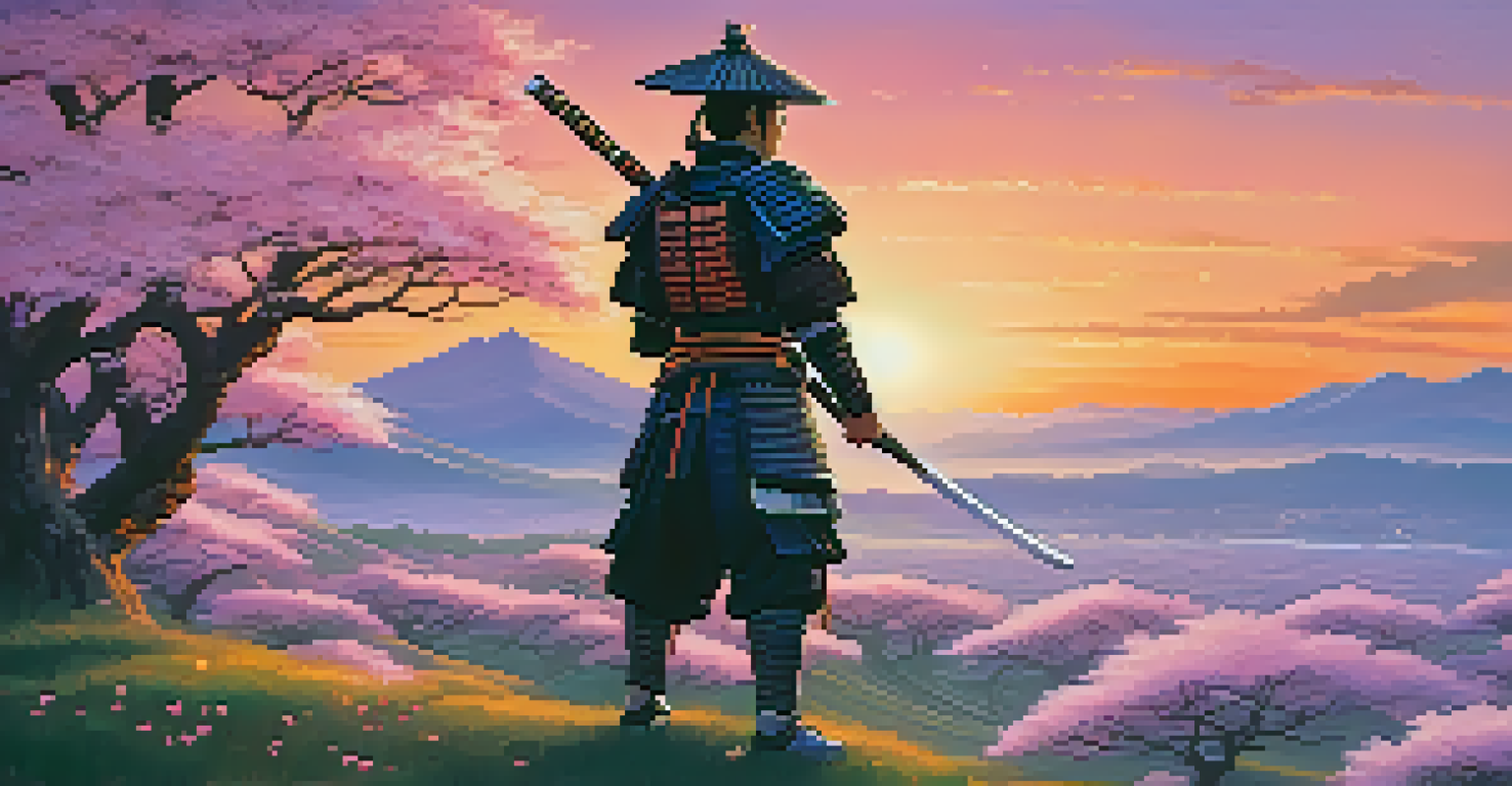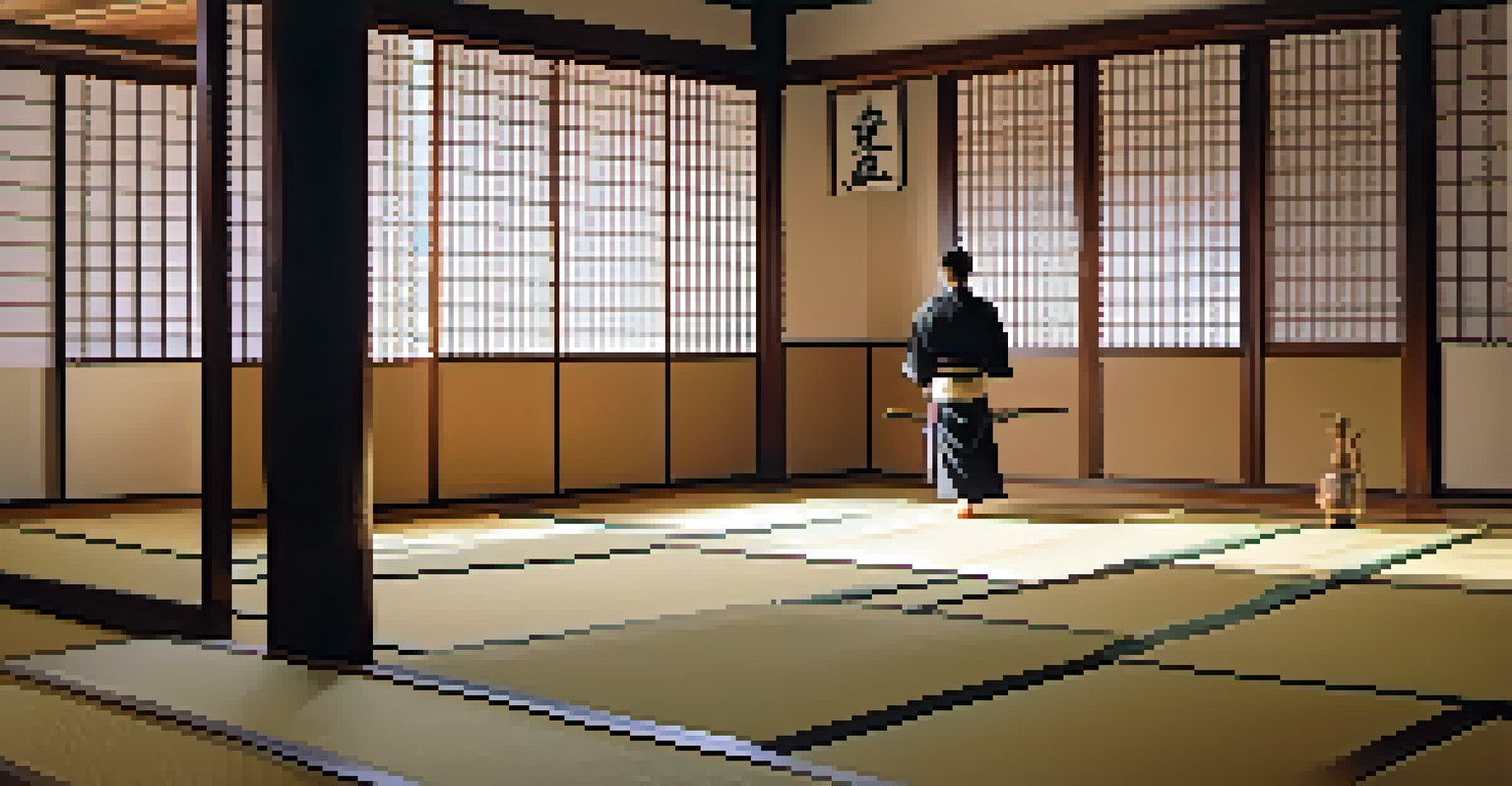The Role of Samurai Texts in Shaping Japanese Martial Arts

Understanding Samurai Texts: A Historical Context
Samurai texts, often referred to as 'bujutsu' manuals, have been pivotal in documenting the philosophies and tactics of Japanese warriors. These writings emerged during the feudal era, reflecting the values and techniques of the samurai class. They serve as both instructional guides and philosophical treatises, offering insights into the martial arts that flourished in Japan.
The ultimate aim of martial arts is not having to use them.
Historically, these texts were not just about combat; they encompassed the samurai's code of ethics, known as 'bushido.' This code emphasized loyalty, honor, and discipline, deeply influencing martial arts practices. Understanding this context helps us appreciate how these texts shaped not just fighting techniques, but the very mindset of martial artists.
As we delve deeper into these manuscripts, we see how they were crafted by renowned warriors and strategists, making them invaluable resources. Each text carries the weight of experience and tradition, serving as a bridge between the past and present in martial arts.
Key Samurai Texts That Shaped Martial Arts Techniques
Several seminal texts have left a lasting impact on Japanese martial arts, with the 'Book of Five Rings' by Miyamoto Musashi being one of the most prominent. This text outlines Musashi's unique approach to swordsmanship and strategy, blending philosophical insights with practical techniques. Its teachings have influenced countless martial artists, making it a cornerstone of martial arts literature.

Another notable work is 'The Unfettered Mind' by Takuan Soho, which explores the mental aspects of combat. It emphasizes clarity of thought and mental discipline, crucial elements in mastering martial arts. Such texts highlight the importance of mental fortitude alongside physical prowess, a concept that resonates deeply within the martial arts community.
Samurai Texts Shape Martial Arts
Samurai texts, such as the 'Book of Five Rings,' blend combat techniques with philosophical insights, influencing martial arts practices today.
Additionally, 'Hyoho Niten Ichi Ryu' school of swordsmanship, founded by Musashi, remains a testament to the enduring legacy of these texts. The school's principles, derived from Musashi's writings, continue to guide practitioners today, showcasing the practical application of these historical texts in modern training.
Philosophical Insights from Samurai Literature
Samurai texts are rich in philosophical wisdom, offering lessons that extend beyond the dojo. Concepts such as self-discipline, perseverance, and respect are prevalent, providing a framework for personal development. These teachings encourage martial artists to cultivate not just their physical skills, but their character as well.
In the midst of chaos, there is also opportunity.
For instance, the idea of 'mushin' or 'the mind without disturbance' is a recurring theme in many samurai writings. This state of mental clarity is crucial during combat, allowing practitioners to react instinctively and effectively. By embracing these philosophical insights, martial artists can enhance their training and approach challenges with a more focused mindset.
Moreover, these texts encourage a holistic view of martial arts, intertwining physical training with mental and spiritual growth. The lessons learned from samurai literature continue to inspire modern practitioners, reminding them that martial arts is as much about inner strength as it is about outward skill.
The Influence of Samurai Texts on Modern Martial Arts
The teachings found in samurai texts have transcended time, influencing various modern martial arts styles. From kendo to aikido, the principles articulated in these historical writings can be seen in the techniques and philosophies taught today. This enduring influence speaks to the foundational role that samurai literature plays in martial arts culture.
For example, many contemporary martial arts schools incorporate the ethical teachings of bushido into their curricula. This integration fosters a sense of respect and honor among practitioners, ensuring that these timeless values remain central to the practice. As students learn techniques, they are also reminded of the importance of character development.
Philosophy Beyond Fighting
The teachings in samurai literature emphasize values like discipline and respect, encouraging personal development alongside physical mastery.
Furthermore, workshops and seminars often reference samurai texts, highlighting their relevance in training. By bridging the gap between ancient wisdom and modern practice, martial arts instructors can instill a deeper appreciation for the art form, ensuring that the legacy of samurai literature continues to thrive.
Comparative Analysis: Samurai Texts and Other Martial Arts Literature
When comparing samurai texts to martial arts literature from other cultures, such as Chinese or Western texts, distinct themes emerge. For instance, while many Chinese martial arts manuals emphasize fluidity and adaptability, samurai texts often focus on discipline and strategy. This difference reflects the unique historical and cultural contexts in which these arts developed.
Moreover, Western martial arts literature, such as the 'Art of War' by Sun Tzu, shares strategic insights that parallel samurai teachings. Both emphasize the importance of understanding one's opponent and the environment, showcasing the universal principles of combat. However, the samurai texts often delve deeper into the psychological aspects of martial arts, offering a broader perspective on the warrior's mindset.
This comparative analysis not only enriches our understanding of martial arts but also highlights the interconnectedness of these traditions. By appreciating the diverse influences across cultures, martial artists can enhance their practice and gain a more holistic view of fighting arts.
The Role of Samurai Texts in Preserving Martial Arts Traditions
Samurai texts play a crucial role in preserving the rich traditions of Japanese martial arts. These writings serve as historical documentation, ensuring that the techniques and philosophies of past masters are not lost to time. By studying these texts, practitioners can connect with the lineage of their art, fostering a sense of continuity and respect for tradition.
Additionally, many martial arts schools reference these historical writings in their teaching methods. This practice not only enriches the learning experience but also instills a sense of pride in the cultural heritage of martial arts. Students are encouraged to appreciate the depth of knowledge contained within these texts, making their training more meaningful.
Cultural Legacy in Modern Practices
Samurai texts preserve the traditions of martial arts, ensuring that the wisdom and techniques of past masters continue to inform contemporary training.
As martial arts continue to evolve, the teachings found in samurai literature remain a cornerstone of practice. By valuing these texts, martial artists honor the legacy of their predecessors, ensuring that the essence of their art remains intact for future generations.
Conclusion: The Enduring Legacy of Samurai Texts
In conclusion, the role of samurai texts in shaping Japanese martial arts is both profound and multifaceted. These writings not only document techniques but also impart essential philosophies that guide practitioners in their journey. By understanding and embracing these texts, martial artists deepen their connection to their art and its history.
The teachings found within samurai literature continue to resonate, inspiring new generations of martial artists. As they navigate the complexities of training, these timeless principles provide a source of strength and guidance. The legacy of the samurai endures, reminding us of the importance of honor, discipline, and respect in martial arts.

Ultimately, samurai texts serve as a powerful reminder that martial arts is not just about physical ability but also about cultivating character. As we reflect on their impact, we recognize that these writings will continue to shape the future of martial arts for years to come.